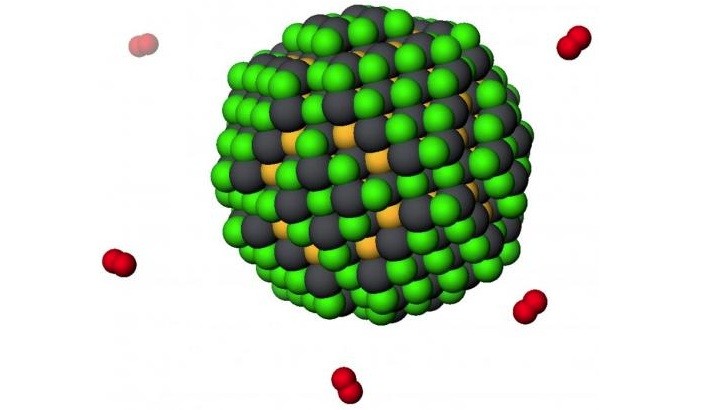Experiments with quantum dots are not that new, with the idea being firstly used by Burnham and Duggan in 1990, after which a series of research projects were initiated. Recently, the University of Toronto set a new efficiency record for them, living us hope that solar panels will simplify a lot into the future.
The research team managed to make and test a new type of colloidal quantum dots (CQD) that are not loosing performance when getting exposed to oxygen, a problem that the previous types were suffering from.
This might seem like alien technology for you, so let us explain a bit. A quantum dot is a particle of a semiconductor material that has been reduced below the size of the Exciton Bohr-radius, meaning they can take advantage of the laws of quantum mechanics.
In solar cell technology, the quantum dots are used to absorb the photovoltaic material. They also have the advantage of having a band gap that can be modified by changing the nanoparticles size, making them useful for multi-junction solar cells.
These types of solar cells use different size dots to absorb different areas of the light spectrum. And because the quantum dots’ band gap can be tuned at will, a single-junction cell can replace the type above and absorb more light from the Sun, including infrared one.
The bad thing so far was that previous CQDs had a habit in mixing with oxygen atoms and turn useless within minutes of exposure to air. The latest research led by post-doctorate researcher Zhijun Ning and Prof. Ted Sargent came up with a new type of CQD that solved the glitch.
Although their 8 percent peak efficiency is a lot less than current solar panels (typically at around 15%), the technology promises to become way better than their classic silicon counterparts in the future.
The nanoscale semiconductors’ size also enables them to be dispersed evenly within inorganic ligands - colloid - to create a substance you can then paint or spray over a house or a car. With a bit of luck and more funds injected in these researches, in 20 years from you might be able to tick mark optional photo voltaic paint for your brand new EV, which unlike the classic roof-molded solar panels, will be more efficient and cover the whole car.
This might seem like alien technology for you, so let us explain a bit. A quantum dot is a particle of a semiconductor material that has been reduced below the size of the Exciton Bohr-radius, meaning they can take advantage of the laws of quantum mechanics.
In solar cell technology, the quantum dots are used to absorb the photovoltaic material. They also have the advantage of having a band gap that can be modified by changing the nanoparticles size, making them useful for multi-junction solar cells.
These types of solar cells use different size dots to absorb different areas of the light spectrum. And because the quantum dots’ band gap can be tuned at will, a single-junction cell can replace the type above and absorb more light from the Sun, including infrared one.
The bad thing so far was that previous CQDs had a habit in mixing with oxygen atoms and turn useless within minutes of exposure to air. The latest research led by post-doctorate researcher Zhijun Ning and Prof. Ted Sargent came up with a new type of CQD that solved the glitch.
Although their 8 percent peak efficiency is a lot less than current solar panels (typically at around 15%), the technology promises to become way better than their classic silicon counterparts in the future.
The nanoscale semiconductors’ size also enables them to be dispersed evenly within inorganic ligands - colloid - to create a substance you can then paint or spray over a house or a car. With a bit of luck and more funds injected in these researches, in 20 years from you might be able to tick mark optional photo voltaic paint for your brand new EV, which unlike the classic roof-molded solar panels, will be more efficient and cover the whole car.
